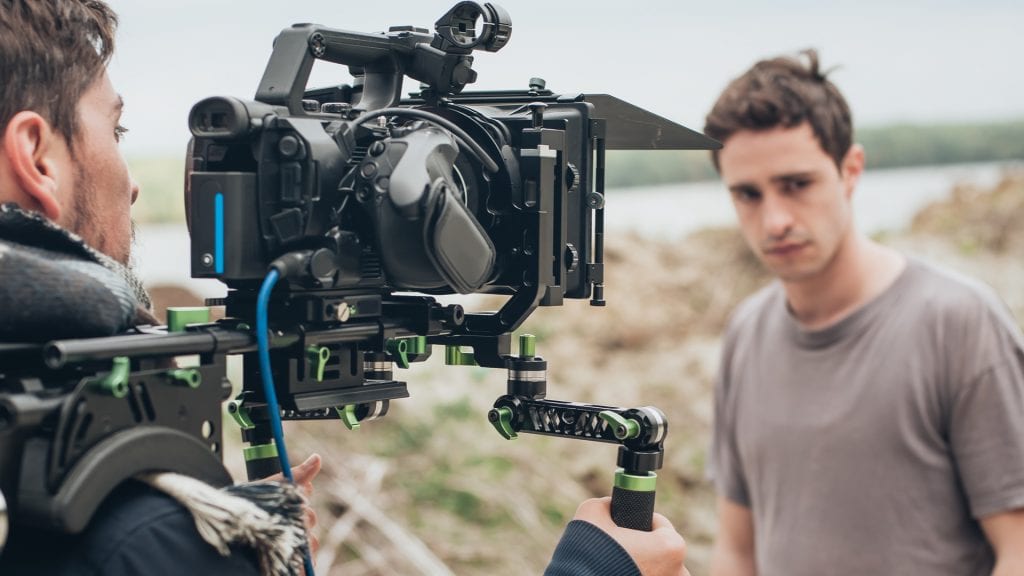How to Transcribe a Documentary Interview & Why You Need This
In the documentary film production process, interview transcription is an important step to be able to quickly find story-driving quotes in post-production.

When it comes to making a documentary, transcribing interviews is one of the most expensive and necessary of all production tasks. The transcribing process, if done on your own, can be time-consuming and it doesn’t always produce an accurate transcription of your audio and video files.
In this article, we’ll explore what it takes to get an interview transcribed. There are several options to get your audio recordings transcribed, all with varying turnaround time. Ultimately, we advise you to hire the experts and use interview transcription services like Rev.
Why are transcripts essential for documentary filmmaking?
Whether it be an hour-long feature film or a short, documentaries always have hours of interview footage and without a video transcript of those interviews putting together your final film can be incredibly difficult.
Interview transcription is also important for fact-checking, sorting through your content more efficiently, editing dialogue sequences faster and avoiding out-of-context misunderstandings.
Also having a video transcript can help improve your documentary distribution strategy as well as make your documentary more accessible to the hearing impaired.
So a good interview transcript can be the difference between a smooth editing process and one that makes you want to pull out your hair in frustration. But some transcripts are better than others.
What makes a great interview transcript?
#1 Good audio
Everything starts with good audio. Bad audio is distracting. In fact, studies have found that having good audio is more important than having good visuals. But clear, high-quality audio is not only is it critical for production; it’s also crucial for transcriptionists. Muffled and unintelligible audio is impossible to transcribe. It’s like trying to figure out what someone is saying underwater.
#2 Multi-speaker labels and timecodes
Labels and timecodes are the quickest and most efficient way to index your material. They make putting together a script and editing your final piece together a breeze.
#3 Paragraph breaks
If you’ve ever looked at an email that’s a block of text and just thought you don’t have time for that, you’ll understand how important paragraph breaks are. They help you see where natural shifts in ideas and speech happen.
#4 Accurate spelling and grammar
Accuracy in transcripts is vital as one mistake can completely change the context or meaning of a sentence.
#5 Details
Sometimes it is all in the details. Things like interruptions, false starts, ums and ahs, can all affect the audio production and how you edit. So, if these are important for context, you’ll want a verbatim transcript.
How to Transcribe Interviews Yourself
- Playback the recorded audio
- Take note of timecodes
- Label the speakers when they speak
- Listen to the words being said
- Type the words said by each speaker
- Revise and re-listen to the audio
- Correct spelling and grammar
- Break up large paragraphs of text
- Format your document
- Don’t forget to save!
Best option to transcribe interviews
There are lots of ways you can get a video transcript of your interview, but what’s the best way?
Option 1: In-House
One option is to transcribe your audio in-house. Yet, this often inefficient and not very cost-effective.
Fifteen minutes of footage takes, on average, an hour to transcribe. And this can double or triple in time, depending on things like if you need a verbatim transcript, the number of speakers, if the speakers have accents, etc.
Option 2: Professional Transcriptionist
You could also hire a professional but it can still take them just as long to transcribe everything and it will cost you between $15 to $30 an hour.
Option 3: Automatic Speech Recognition
Another option is Automatic Speech Recognition (ASR) software which can transform your audio into text. Speech recognition technology is much more advanced nowadays but it’s still imperfect.
Typically ASR programs can yield an accuracy rating of 60 to 70%. But that’s still one out of three words wrong and the accuracy goes down dramatically as the number of words per sentence increases. It also has trouble dealing with background noise, multiple speakers and any unclear audio files.
Plus, ASR doesn’t include speaker labels, paragraph breaks, or details like sound effects. Also, the ASR transcript is more often than not riddled with spelling and grammatical errors.
Option 4: Human-based Transcription Service
The final option is to use a human-based transcription service. And while there are plenty of transcriptions services out there, it can be hard to find one that will ensure all interview transcription best practices and not kill your budget.
Human-based transcription services can take longer and cost more than automated ones, but Rev transcription services transcribe documentary footage fast and accurately for a reasonable price of $1.99 per audio minute.
Rev Transcription Services
To get started with Rev, all you need to do is follow these three simple steps:
1. Sign up or log in
If this is your first time on Rev all you need to do is sign up with an email address. If you’re a returning user just log in with your email address and password.
2. Upload your files
Once you log in, click “Get Started” or “Place New Order”. You’ll then have the option to upload a file directly from your computer, paste a link or use Rev’s API to automate your uploads.
After the files have been successfully uploaded into the system, payment and service options appear.
3. Customize your order
Rev offers you the option to have a verbatim transcript, time coding as well as the option to make this transcript a rush job – meaning you’ll get your transcript back in four-hours or less. Rev guarantees a 12-hour turnaround for 30 minutes of audio but often it comes back much faster.
After you’ve selected everything you want, confirm your order and then Rev’s transcription network does all the heavy lifting.
How it works
Rev has a network of over 50,000 vetted English-speaking transcriptionists that work through Rev’s platform.
For a quick turnaround, large projects are broken down into multiple parts so multiple transcriptionists can work on it at the same time. Rev then compiles it and sends it back to you in one document.
This process means you get your interview transcription back five times faster than if you’d done it in-house. Plus with a 99% accuracy guarantee, you can trust your transcript will correctly reflect your interview content.
Rev’s platform also lets transcriptionists easily add time codes, speaker labels, and more to make sure that you can use your transcript to its full potential when putting together your final edit.
Pricing
Rev’s pricing model is straightforward; it costs $1.99 minute and there’s no extra charge for multiple speakers, specialized terminology, accents or even difficult audio.
Final product
When the transcript is complete you get an email notification.
You can review your transcript on the Rev website as well as edit it before downloading the final copy. For quick navigation through your transcript, you can select sections by timestamp or speaker.
So when it comes to transcribing your documentary interviews using Rev is the most efficient and cost-effective way to make sure your editing process goes smoothly.
And once your documentary is cut together Rev can caption and subtitle your final film, too.















